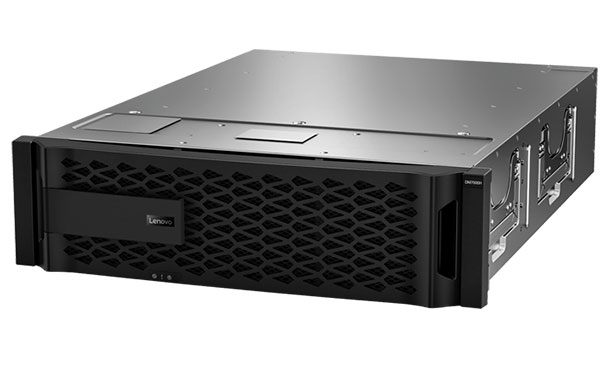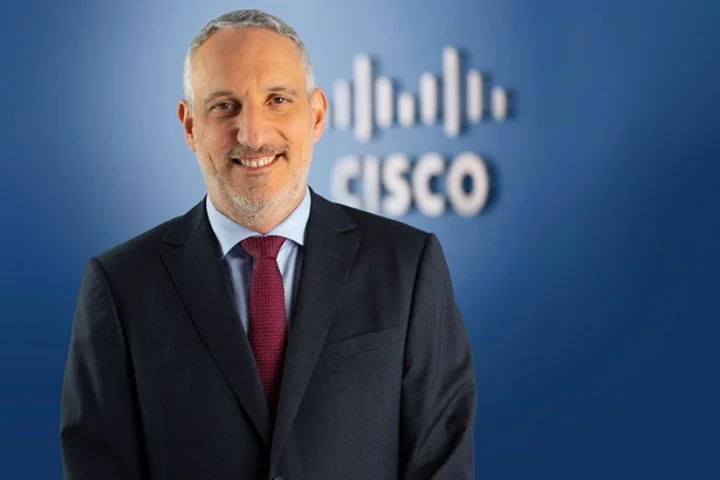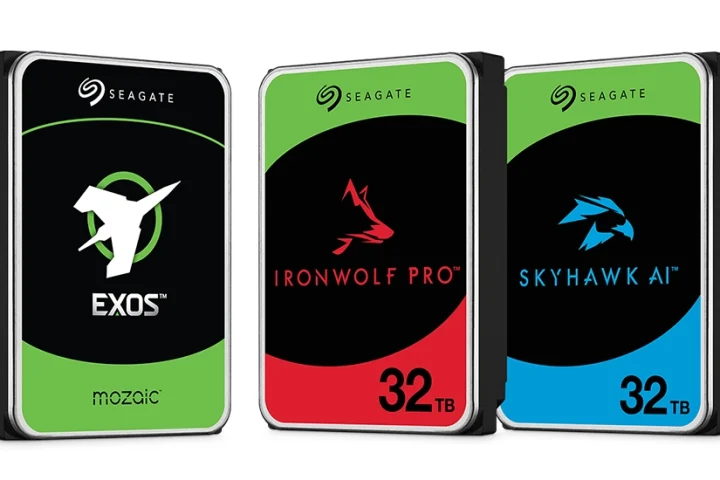The proliferation of data is reaching epic proportions, just when companies are discovering that they can’t simply upload it all into the cloud. What they need is a new approach to storage infrastructure, explains Florian Malecki, Senior Director of International Product Marketing at StorageCraft Technology.
EC: Please summarise your latest portfolio of datacentre products and solutions.
StorageCraft provides data management and protection solutions for the next-generation hybrid data centre, be it on-premises or in the cloud. We assure modern business continuity with innovative, smarter and reliable enterprise-class IT solutions for businesses, serving organisations of all sizes, with millions of servers protected and several petabytes of data under management. Our solutions provide complete data protection, industry leading recovery and scalability for seamless business continuity. It is incredibly easy to deploy and manage, ensuring secure data protection, reduced downtime and improved productivity to organisations struggling with management, complexity, cost and risk associated with ageing legacy storage infrastructures.
What are the current technology trends influencing the design and performance of datacentre products and solutions?
Let’s put the data growth problem under a magnifying lens. When people look at data, they are mostly conscious of the mission critical data, because, well it is mission critical. These require ultra-high performance with low-latency. Typically, they are databases or applications layered over databases. However, this typically represents only 10-20% of an enterprise’s data. The rest of the 80% is mostly made up of unstructured data. There are multiple data sources and typically are housed in different point solutions leading to complexity and poor utilisation of resources.
What are the current pain points and expectations of CIOs from vendors of datacentre products and solutions?
CIOs are looking for technologies that allow them to support and embrace the business initiatives. This also means solving the following paint points:
- Storage and data resilience
- Inefficiency and limited budgets
- Business capacity, growth and recoverability requirements
- Data sovereignty and compliance
- Managing assets, risk minimisation
With the continuous and steady movement of applications and workloads to cloud platforms, what is the future of the enterprise datacentre?
The proliferation of data is reaching epic proportions, just when companies are discovering that they can’t simply upload it all into the cloud. What they need is a new approach to storage infrastructure that can manage their data growth and, at the same time, secure all of their unstructured data, wherever they put it. Choosing the right storage system for the new reality of cloud repatriation gives organizations peace of mind. It assures them that they can cost-effectively manage their increasing data volumes and gives them the confidence that their data is always securely at their fingertips.
What are the growing opportunities in backup and recovery for IT solution providers?
An independent global research study on experiences and attitudes of IT decision-makers around data management commissioned by StorageCraft this year reveals global concern about the business impact and risk from rampant and unrestricted data growth. It also shows that the IT infrastructures of many organizations are struggling, often failing, to deliver business continuity in the event of severe data outages.
86% of respondents believe that data volume will increase 10x or more in the next five years. As a result, data loss and rising cost of application downtime leads to reduced productivity and revenue. The unavailability of critical data and systems negatively impacts company reputation and results in potential loss of customers. As a result, organisations of all size are embarking on the new race to zero: near zero RPO and RTO.
Protecting company’s data against threats like systems failure, site-wide disaster and ransomware should be at the forefront of any IT strategy. Organisations are often unclear about the best way to keep their files and systems safe, but there are plenty of preventative measures that can be taken to avoid the costly risk of downtime. Arguably the most important factor is backing up and recovering data quickly and efficiently. That is where cloud storage comes in.
Many organisations already have an onsite disaster recovery plan in place that includes regularly scheduled backups, storing the backups in a secure data location where it can be quickly recovered. However, if a disaster such as a flood, fire or earthquake should strike the business site, a local backup strategy most likely won’t help.
Whilst these local backups are sufficient to recover from most common disasters, a site-wide disaster can be the difference between business continuity and business failure. In today’s volatile, fast-paced technology landscape, organisations must have the ability to recreate themselves quickly and reliably should disaster strike their site or internal systems.
With most cloud services providers, companies can tailor their coverage to meet unique recovery and budget requirements while enjoying access to data anytime, anywhere, with instant failover in a cloud built specifically for disaster recovery. The cloud combines low setup, management and overhead costs with high flexibility. The important thing is protecting and securing backups offsite and giving businesses the peace of mind that comes with knowing that data is safe and secure.
How can organisations ensure effective backup when moving to the cloud?
The cloud is great, but it is not the silver bullet. Some factors that organisations should consider when moving to the cloud are:
- Keep backups on-site and off-site. With any data, redundancy is the key. Organisations should be sure to keep data copies both on-site and off-site. Off-site could be in the cloud, but it could also be backup images stored on a hot-swappable hard drive that you can take to a secondary location, also known as poor man’s cloud.
- Choose a cloud with recovery options. If it is not possible to recover data locally, organisations need to have a back-up strategy in place. Some cloud services will allow you to spin up a Virtual Machine, even if local recovery is impossible. For systems that have zero tolerance for downtime, a cloud-based recovery option is the best option.
- Mirror critical data. 99.999% uptime is exceptional, but nothing is infallible. It is important to remember that, while uptime is great, errors do occur, and data can be accidentally deleted or somehow corrupted. For extra critical data, it’s wise to not only backup data in the cloud, but to mirror it to a geographically disparate region for extra assurance.
What are your tips on business continuity and backup best practice?
In order to ensure the best possible chance of business continuity in the event of an attack, organisations should work with their IT or managed service provider team to create a disaster recovery plan that will list the steps necessary to meet their Recovery Time Objective and Recovery Point Objective.
Any good DR plan should:
- Identify high-priority servers that are hosting valuable data. They are the most critical to prioritise for backup and recovery.
- Be able to restore backups quickly – regular backups are the foundation of any organisation’s DR plan. However, these backups have no value if they cannot restore quickly and easily when hit by a ransomware attack. Backup Area Network can be used to keep backup data separate from production data. A dedicated Backup and Disaster Recovery solution should be on an isolated network, which can be locked down to ensure security is as tight as possible.
- Include offsite replication – it is essential that businesses replicate their backups off-site to ensure business continuity in the event of a site issue. Just backing up locally might not be enough should a destructive ransomware attack a shared folder on your NAS boxes by accessing file services on your PCs.
- A good DR solution will also replicate data to a remote location; second site within the company; or to private/public cloud.
- Businesses must be able to test their DR plans. A disaster cannot be the first test. A good DR plan will be easy to test, and will be tested often. Testing is the only way that Recovery Time Objective can be validated and Recovery Point Objective can be met.
Business also need to shared networks and then restrict access. They can do this by:
- Using unique/different credentials for each shared folder instead of default root/admin or user account. Only allow specific IT administrator account(s) to access backup folders
- Locking down access to servers/NAS hosting the shared folders
- Not mapping backup folders so users can directly access centralised dashboard and reporting
- Running periodic AV scans of shared folders outside the backups schedule
- Ensuring that the whole environment / workforce is backed up – including remote workers and any SaaS applications. For example, Office 365 or G Suite
At the end of the day, disaster preparedness is the key to disaster recovery and business continuity. It is the last line of defence when prevention fails.
- How can partners benefit from a holistic approach for data backup and recovery solutions?
- Is there a skills gap in understanding the need for back and recovery solutions? If yes, what are you as a vendor doing to bridge the skills gap?
- How can partners bridge the skills gap, if it exists?
- What sort of challenges can crop up in the backup and recovery solutions arena?
With the explosive rate of data growth, the current approach to fragmented data storage, management and protection will be untenable. IT fragmentation with a multitude of point-products has created silos, complexity, vulnerability and out-of-control storage costs. Data silos will have to collapse. If not, IT infrastructures will buckle under the weight of their own data.
StorageCraft’s vision and mission is to guarantee that customer data is always safe, always accessible and always optimised, and to democratise converged platforms, that includes the entire data environment including primary, secondary, on-premise and off-premise. Our innovative converged primary and secondary scale-out storage platform, with integrated data protection, solves data growth challenges and is efficient and easy to use for on-premises, cloud-based, or hybrid deployments.
Organisations’ data is the most valuable asset and one of the most critical pieces of your solutions set. And that’s not going to change. The Global Data Protection Market is expected to reach $125.8 billion by 2023. Businesses of all sizes are seeing unprecedented growth in the volume of data, the need for data security as well as the rising concerns of the impact of critical data loss.
This means it’s time to re-imagine business continuity. The explosive growth within the data protection and management market requires product innovation that is simple and scalable. StorageCraft understands that successfully addressing the customer opportunity within the growing business continuity market requires options. Options like software across flexible licensing options or scale-out hardware that makes it efficient to provision and grow and a converged protection and storage solution. As partners’ customer demand in this category continues to grow, partners will need solutions designed to eliminate protection and storage silos.
StorageCraft robust suite of products spans the entire Business Continuity category. This empowers partners to take advantage of the entire addressable data protection and management market while allowing a right-fit approach to their customer needs.
What are the data protection piece of StorageCraft’s portfolio?
The rising cost of downtime and data loss are major concerns for any organisation, risking loss of productivity and revenue. The unavailability of critical data can have lasting negative impact on a company’s reputation and can result in loss of customers. There is a need to use multiple solutions to properly protect a wide range of workloads, virtual and physical, on-premises and cloud, thus increasing complexity and costs.
StorageCraft’s powerful data protection offerings deliver instant, reliable and complete data recovery, and eliminate downtime. Our innovative converged primary and secondary scale-out storage platform, with integrated data protection, solves data growth challenges and is efficient and easy to use for on-premises, cloud-based or hybrid deployments.
OneXafe converged scalable data protection platform unifies enterprise-class data protection with scale-out storage in an easy-to-use, configurable solution. ShadowXafe is the next generation data protection solution that brings a unified, SLA-driven management for the complete data protection lifecycle. It ensures SLA-driven data protection and delivers powerful recovery for physical and virtual machines.
And the cloud-based protection piece?
StorageCraft provides a highly customisable disaster recovery cloud that users can manage through an easy-to-use, self-service online portal. With StorageCraft Cloud Services, customers can tailor their coverage to meet their unique recovery requirements while enjoying access to data anytime, anywhere, with instant failover in a secure purpose-built cloud specifically for disaster recovery.
When OneXafe or ShadowXafe are coupled with StorageCraft Cloud Services, total business continuity is ensured. In the case of a site-wide failure, Cloud Services enable IT teams to back up data in secure StorageCraft data centres making data recovery or failover of the entire infrastructure simple, quick, and seamless.
Finally, StorageCraft Cloud Backup provides granular protection of Microsoft Office 365 data and Google’s G Suite data. Once Cloud Backup is set up, backups happen automatically. In a few seconds, users can recover the version of a file or folder that they need, in its original format, through an easy-to-use web interface.
What is OneXafe storage and what does it offer?
OneXafe is a scale-out storage solution that is an on-premise hardware appliance combined with OneSystem, an integrated, enterprise-grade cloud-based storage management service. It is a purpose-built appliance with all enterprise-grade features built-in such as continuous data protection, compression, inline deduplication, and disaster recovery and is completely automated for IT personnel to set-up and operate. The unique scale-out, converged storage appliance consolidates primary data as well as the backup and archival data.
Why is Unified Management an important part of your offering?
Unified Management is critical to ensuring that businesses have full visibility into the status of backup jobs, storage and tools to simplify administration. With complete visibility comes peace of mind knowing that backup jobs are running to plan and that any issues can be identified and remedied before they are able to affect business operations. Unified Management is integral to StorageCraft’s offering because it gives businesses an unprecedented level of visibility by allowing them to manage all operations from one unified platform.
Why is converged storage another key focus for StorageCraft?
Absolutely. Modern day IT teams have to negotiate a complex landscape of challenges, including the growth of virtualised applications, explosive data growth and diminishing backup windows. To support IT teams in their pursuit for success, StorageCraft has developed the OneXafe solution. OneXafe is a converged data platform that combines data protection with scale-out storage in an easy to use solution. By unifying data storage and protection into a single data infrastructure, operations are simplified, and the complex management of disparate infrastructure units eliminated.
As well as disaster recovery?
Disaster Recovery is undoubtedly a key focus for StorageCraft. Having a DR plan is one of the most effective steps that companies can take to safeguard their data and put back up and recovery at the top of their list of priorities.
Disaster Recovery is also a classic example for a situation where Managed Service Providers can be an SME’s best friend by offering Disaster Recovery as a Service. A strategic offering that provides fully integrated, on-premise, off-premise, and cloud solution, DRaaS allows customers to instantly spin up a virtual server or entire infrastructure in the cloud. This means they can rely on a perfect working replica while they rebuild their on-premise environment in the background.
There are many benefits to StorageCraft’s Disaster Recovery as a Service. It is a custom-built DR cloud solution that virtualises entire machines, or even a whole network, to deliver a simple and flexible file and folder recovery service. It’s backed up by military-grade security with 99.999+% uptime and 24/7 monitoring.
And scale out is becoming increasingly important as we move from terabytes to petabytes and beyond.
As organisations expand, it is crucial that their technology systems develop in tandem so that they are able to best support, facilitate and protect business growth. Many companies, SMEs in particular, find that as they grow the volume of data they send, receive and store grows exponentially, whether that be in the form of backups, employee data, customer data or simply administrative content or unstructured data.
Never before has it been so important for businesses to have a scale out storage solution that is capable of safely and cost effectively storing valuable data. If organisations fail to invest in the scalable storage architecture as they grow, they put themselves at risk of out-growing existing storage systems and pay massive forklift upgrades.
Do you also offer ransomware protection?
When prevention fails, StorageCraft is the last line of defence against a ransomware type of attack. No business is ever truly safe from malware. StorageCraft always advocates prevention, but if this fails, businesses should protect themselves with a disaster recovery plan. The plan should incorporate regular backups that are frequently checked and also replication of these backups to an external, offside source that is inaccessible to malicious software.
StorageCraft’s back-up and recovery solutions automate the backing up of physical and virtual systems, applications and data. StorageCraft Cloud Services safeguards data offsite by replicating backups to the StorageCraft DRaaS.
It is also important to note that OneXafe Continuous Data Protection feature takes immutable snapshots automatically every 90 seconds for the first hour, then on an hourly, daily, weekly and monthly basis. Should a ransomware attack occur, encrypting the data and corrupting the primary file system, the snapshots are completely unaffected, immune from any modification or deletion. The ability to take such granular snapshots at 90-second intervals is critical to ensure recovery of the latest version of the data. Users can then easily recover individual file, folder or complete network share!
How do you see StorageCraft’s profile right now in terms of its Channel model and its geographical coverage?
StorageCraft is 100% channel focused across the globe. It’s in our DNA and our partner strategy is key to our success. In September last year, we announced the launch of the StorageCraft Global Partner Success Programme. The programme has been completely refreshed to make it easy and highly profitable for channel partners to build and expand their presence in the business continuity category using the StorageCraft suite of products. The StorageCraft Partner Success Programme is comprised of three tiers: Certified Partner, Premier Partner and Elite Partner.
The only way we go to market and grow our business is through our partners. We do not direct-sell. We believe in the model and understand that the model has the best reach so it’s the single best way to increase customer and end-user satisfaction around the world. Our belief is that just because it works in Silicon Valley, doesn’t mean it works across the rest of the US. The reality is that you have to have local presidents to manage local markets. There’s a difference between Europe and the UAE. There’s a difference between California, Texas and Massachusetts. People believe that because those American companies share the same tax laws and business strategies, there’s a lot of commonality.
Ultimately, it comes down to relationships and people. Some believe it’s expensive, but we think we try to extend our company culture into our partner base which seems to bring a real level of loyalty and commitment.






















